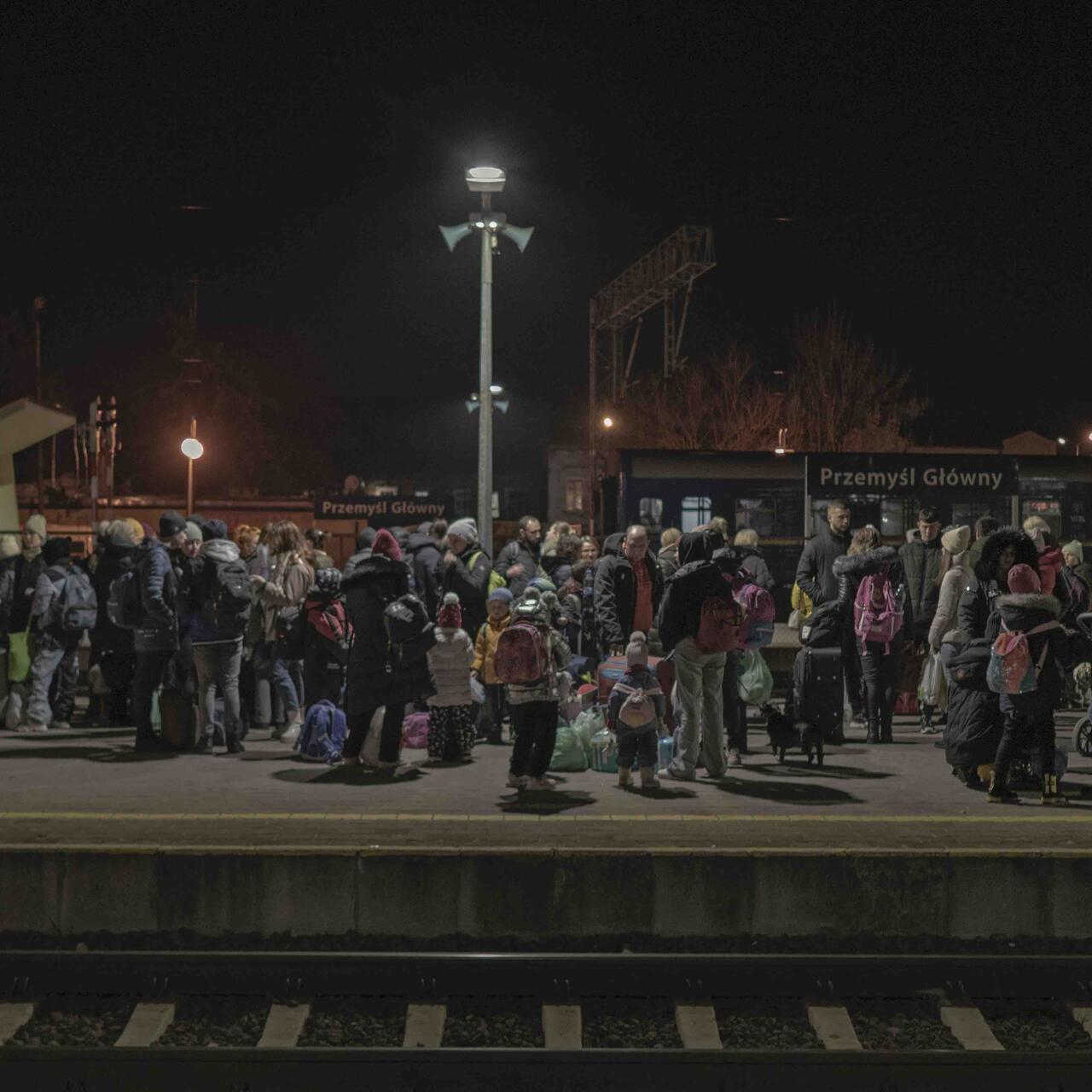
Ukraine war: What are the impacts on the world today?
How the war in Ukraine is impacting both Ukrainians and people around the globe

How the war in Ukraine is impacting both Ukrainians and people around the globe
After over nine months of fighting, there is no end in sight for the war in Ukraine. Millions of civilians are unable to return home. Many still in the country are forced to live without access to food, water, healthcare, and other essential supplies.
This is not an isolated crisis - blockades of Ukrainian grain exports have worsened hunger in some of the world’s most vulnerable regions. Even as international efforts have helped to resume grain shipments, the situation remains dire. In East Africa, for instance, a perfect storm of continued drought, the blockade, and the economic fallout from the war is causing mass starvation. Without urgent international funding, the lives of millions of people are at stake.
Get the facts on how the war in Ukraine is impacting both Ukrainians and people around the globe.
Update: Read the IRC's latest release condemning the recent attack on a maternity hospital in Vilniansk, in the Zaporizhzhia region of Ukraine.
The continued conflict in Ukraine is causing extreme civilian harm and leaving millions without access to food, water and other essential supplies. Innocent civilians have been cruelly caught up in the conflict, with over 17,000 casualties since 24 February, including over 6,500 killed. Over 6.5 million people have been internally displaced.
There has been catastrophic damage to civilian infrastructure, including hospitals and schools. With Ukraine’s cold winter months approaching, families are seeking shelter in damaged buildings not suited to deal with sudden drops of temperature or heavy snowfall.
Starting in October, waves of airstrikes left even more people across the country to face the cold without access to gas, electricity or centralised heating systems. In just one day in mid-November, over 7 million people were left without electricity due to the fighting.
The cold winter months could also bring a health crisis to Ukraine. In the eastern part of the country, the health system is crumbling and hospitals are out of medicine. Many people lack access to safe water and critical care. The World Health Organization (WHO) has warned that thousands are at risk of pneumonia and hypothermia. COVID-19 continues to spread and interruptions to routine vaccinations could even lead to surges of polio.
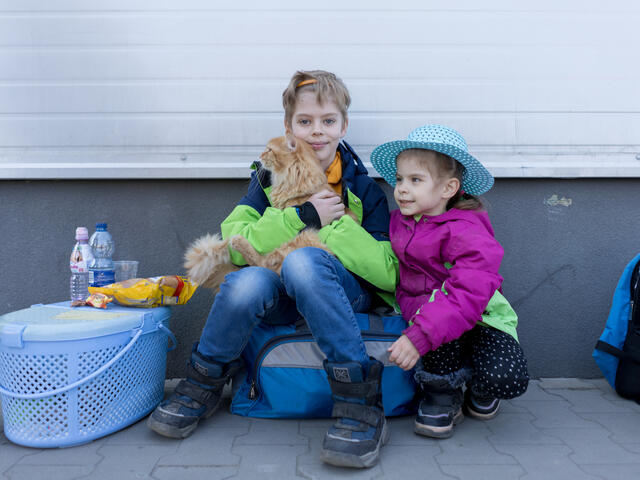
The war in Ukraine has created the fastest displacement crisis in Europe since World War II. The majority of those displaced are women and children, who are always most at risk of exploitation and abuse during crises.
As of November 2022, there are over 7.8 million refugees from Ukraine recorded across Europe.
Ukrainian refugees are predominantly finding safety in neighbouring countries. Poland has granted protection to over 1.2 million Ukrainian refugees while other nearby countries Hungary, Romania, Slovakia and Moldova have each given safety to tens of thousands of Ukrainian refugees. Czechia is currently the country hosting the most refugees per capita in Europe, having granted protection to almost half a million people.
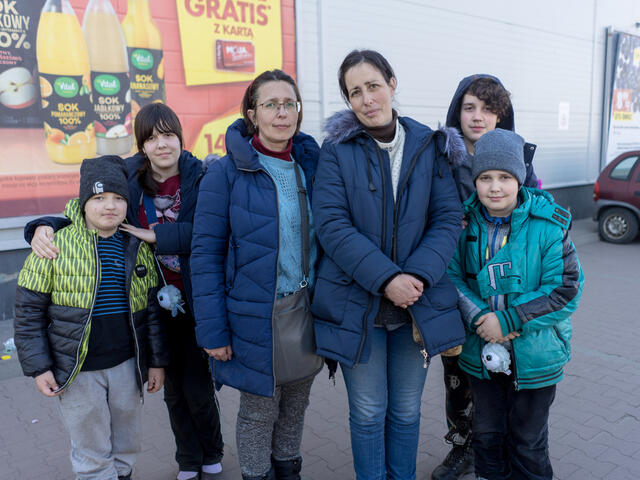
In crisis settings, existing gender inequality is exacerbated while instances of gender-based violence increase. Women and girls with extremely stretched resources and disrupted support networks are vulnerable to traffickers ready to exploit the crisis.
Women forced to flee their homes also often struggle to access critical reproductive healthcare and pre and post-natal care, which are typically limited in crisis situations.
Children forced to flee Ukraine have their lives uprooted, education interrupted and are in some cases even separated from their families.
One mother’s story about fleeing Ukraine with her children.
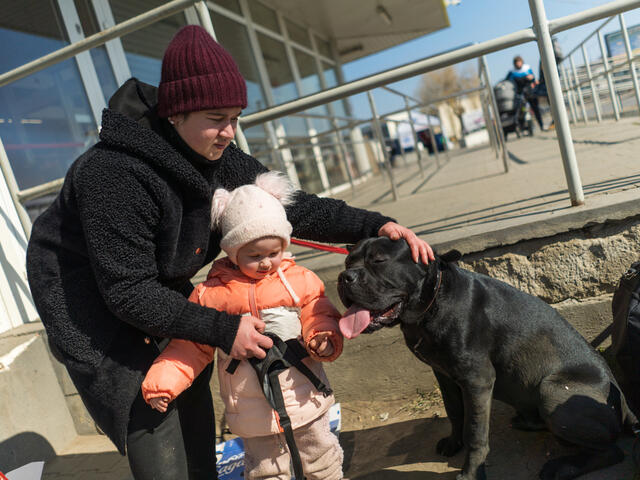
The war in Ukraine has an obvious impact on those within the country displaced by conflict. Outside of Ukraine, the war also continues to have a major effect on the global markets and food supply. Ukraine’s inability to export grain throughout the first five months of the conflict worsened a global hunger crisis, with catastrophic impacts throughout the world.
Ukraine is historically a large exporter of grain. In 2021, Ukrainian grain fed 400 million people around the world. For the first 5 months of the war, Ukraine was unable to export its grain through its primary shipping routes through the Black Sea.
Countries reliant on this grain suffered as a consequence. Several grain-receiving countries across the Middle East and Africa were already experiencing hunger crises due to conflict and climate change. The war in Ukraine made these hunger crises worse.
The global repercussions of the war have had catastrophic impacts on countries already facing conflict and crises.
East Africa is facing a looming famine, as a severe drought hits the region alongside the disruption in food supply caused by the war in Ukraine. Over 14 million people across Somalia, Ethiopia and Kenya are already on the verge of starvation - about half of them children.
That number could rise to 20 million if the world fails to take urgent action.
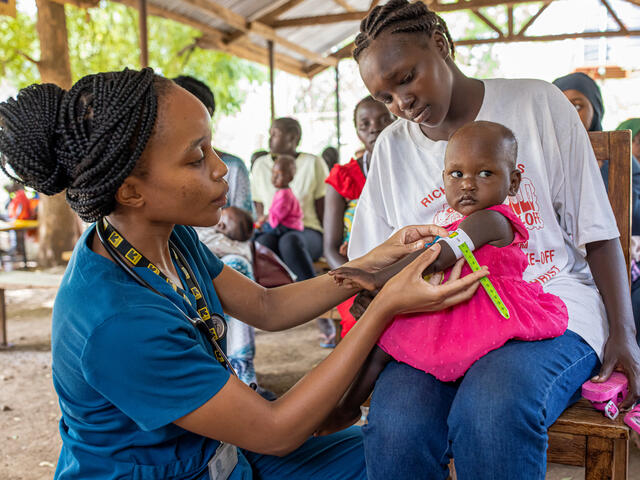
The Sahel region of Africa is experiencing its highest levels of severe food insecurity since 2014. Up to 18 million people are experiencing severe hunger.
In the Middle East, the war in Ukraine has sent prices of wheat and fuel spiraling. Syrian refugees are among the hardest hit, as many do not have the incomes to cover the dramatically increased cost of living.
In Central America, prices for staple foods like white maize are well above the five-year average. Together with climate change and ongoing insecurity, nearly 13 million people across the region face growing hunger.
Back in July, Ukraine and Russia entered into separate deals which paved the way for Ukraine to resume its grains export - a crucial step in providing relief to a growing global hunger crisis. After a temporary suspension by Russia, the IRC welcomed the extension of this deal by a further four months in November.
“Now, the international community must ensure regular and predictable food shipments urgently reach those on the brink of starvation and that Ukraine’s farmers are able to safely grow and transport crops to the ports,” said Marysia Zapasnik, the IRC’s Ukraine country director.
Ending violence against civilians is one of the most important steps to help Ukrainians rebuild their lives. World leaders must ensure that international humanitarian law is upheld and that humanitarian actors are protected and maintain access to help those in need.
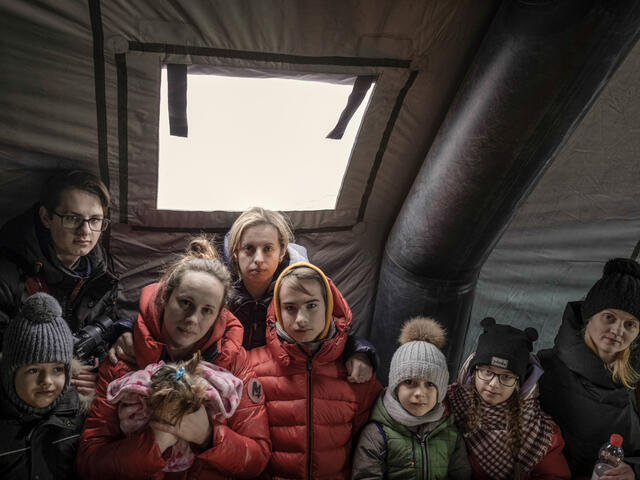
The world must also continue to support both the people who fled Ukraine and the millions of refugees and displaced people worldwide. While there has rightly been an outpouring of global support for people fleeing Ukraine, equal empathy must be shown for refugees and displaced people in many other crises around the world including Afghanistan, Ethiopia, the Democratic Republic of Congo, Yemen and Syria.
To address the hunger crises hitting East Africa and other regions, donors should urgently channel funding to frontline responders who can reach those most in need and deliver the health programming, food and cash assistance, and clean water that people need to survive.
The IRC is continuing to scale up its response efforts in Ukraine, Poland, and Moldova, to match the growing scale of needs and support displaced families. This includes:
Donate now: Your gift will help us provide food, medical care and emergency support services to families whose lives are shattered by conflict and crises around the world.
*Name changed for privacy.